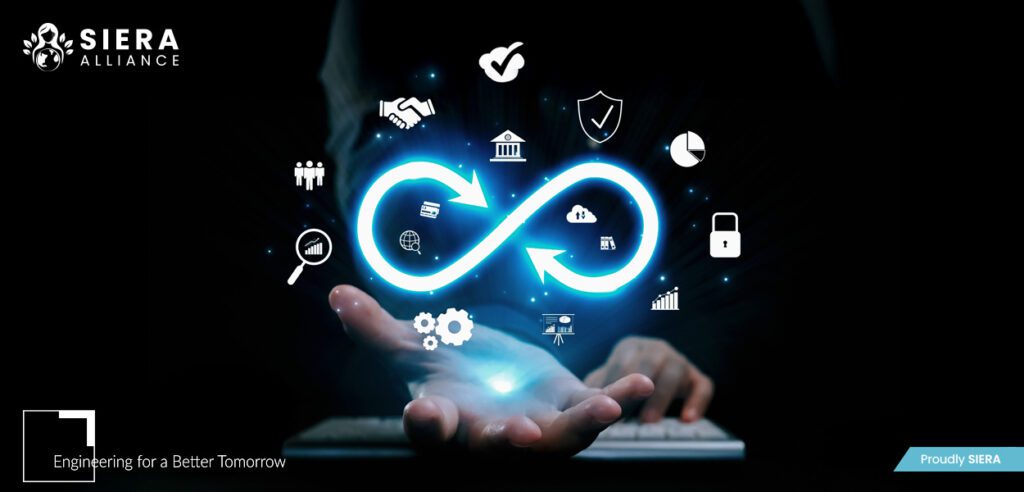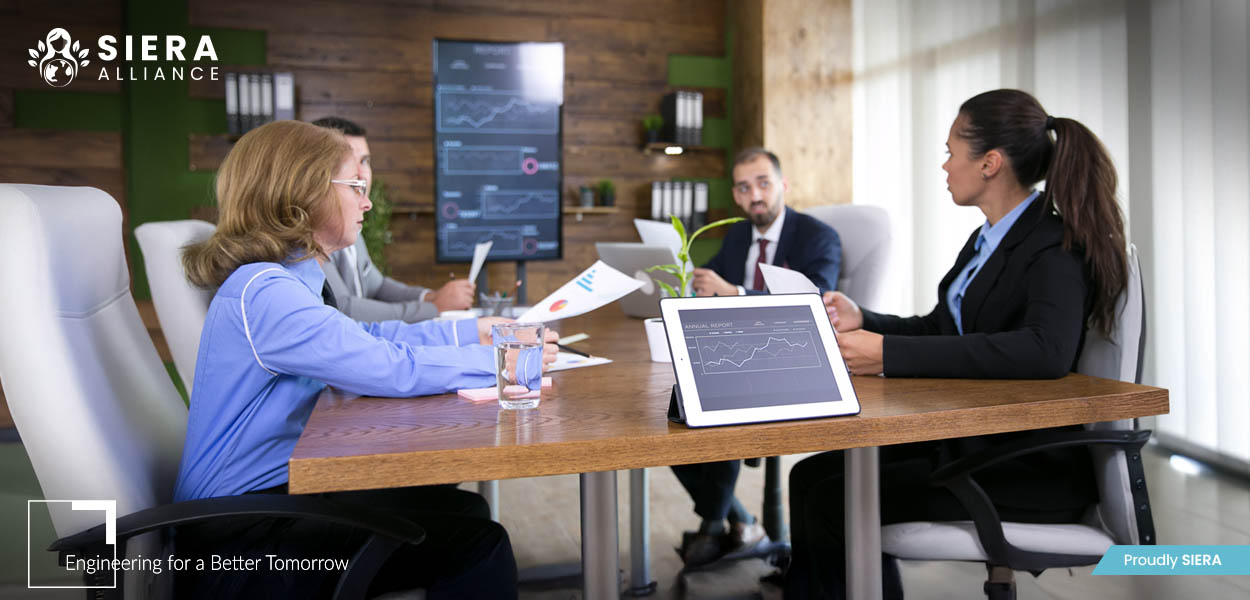Europe’s journey toward climate neutrality and material independence requires more than just clean energy — it requires smarter material loops. As supply chains fragment and critical raw materials (CRMs) become geopolitical pressure points, urban mining and resource recovery are becoming essential to core industrial strategy.
For EUTECH, powered by SIERA, the circular economy is the only path forward. This article unpacks the key technologies, EU policy drivers, and actionable steps companies can take to transform their waste liabilities into strategic assets.
What Do We Mean by Urban Mining and Resource Recovery?
Urban mining treats cities, products, and infrastructure as above-ground mines. It targets metals (e.g., copper, lithium, cobalt, rare earths), high-value polymers, and construction aggregates embedded in the built environment, along with post-consumer waste (e-waste, end-of-life vehicle batteries, cables).
Resource recovery widens this lens by reclaiming materials, water, energy, nutrients (e.g., phosphorus), and heat from industrial effluents, wastewater, landfills, and residual streams. Both strategies minimize virgin resource extraction, cut greenhouse gas emissions, and create resilient, circular value chains.
Why It Matters Now: Climate, Competitiveness, and Compliance
- Climate impact: Recycled metals and secondary materials carry dramatically lower embodied carbon than primary extraction. Urban mining reduces Scope 3 emissions and supports net-zero pathways.
- Supply security: CRMs such as lithium, nickel, and rare earth elements (REEs) are critical for batteries, EVs, wind turbines, and electronics. Secondary sourcing strengthens EU strategic autonomy.
- Cost and resilience: Recovered materials hedge against price volatility and geopolitical shocks.
- Regulatory pressure: EU frameworks — including the Waste Framework Directive, WEEE Directive, Batteries Regulation, CSRD, ESPR (Eco-Design for Sustainable Products Regulation), and Digital Product Passports (DPPs) — increasingly mandate circularity, transparency, and recovery rates.
- Brand and market access: Customers, investors, and public procurers are demanding verified low-carbon, circular products.
Technologies Powering Urban Mining & Resource Recovery
1. Digital Visibility & Data Infrastructure
- Material Flow Analysis (MFA) & Urban Metabolism models to quantify stock flows and recovery potential across cities and supply chains.
- Digital Product Passports/Material Passports to store chemistry, assembly and recyclability data — unlocking efficient disassembly and high-purity recovery.
- IoT, AI and computer vision for real-time composition scanning, predictive maintenance and automated sorting.
2. Advanced Sorting & Pre-Processing
- Robotics, hyperspectral imaging and AI-driven sorting dramatically increase recovery yields of metals, plastics and composites from complex waste streams.
- Mechanical pre-treatment (shredding, granulation, flotation) to condition material flows for hydrometallurgical or pyrometallurgical processing.
3. Metallurgical Recovery (E-Waste, Batteries, Catalysts)
- Hydrometallurgy (leaching, solvent extraction, ion exchange) for selective recovery of high-purity metals.
- Pyrometallurgy for thermally intensive, high-throughput recovery.
- Bioleaching leveraging microorganisms for lower-energy extraction of metals from low-grade waste streams.
4. Construction & Demolition (C & D) Recovery
- Selective demolition & design for deconstruction make high-grade reuse feasible (steel, timber, façade systems, concrete aggregates).
- Material banks catalog components for second-life markets.
5. Water, Nutrients & Energy Recovery
- Anaerobic digestion to generate biogas from organics.
- Thermal and nutrient recovery (e.g., phosphorus crystallization as struvite, heat from wastewater).
- Industrial symbiosis frameworks to channel one facility’s by-product as another’s feedstock.

Policy & Standards Landscape: What Businesses Need to Watch
- EU Critical Raw Materials Act (CRMA): Pushes domestic sourcing, recycling targets and strategic projects to secure CRMs.
- EU Batteries Regulation: Sets ambitious collection, recycling efficiency and recycled content targets — necessitating robust take-back, dismantling and recovery systems.
- Eco-Design for Sustainable Products Regulation (ESPR) & Digital Product Passports: Will enforce product-level material and lifecycle transparency – enabling traceability for urban mining and secondary markets.
- CSRD & ESRS (European Sustainability Reporting Standards): Require material flow KPIs, waste valorization metrics and circularity strategies to be disclosed.
- Extended Producer Responsibility (EPR): Widens compliance obligations and operationalizes reverse logistics for a growing list of product categories.
SustainSuite, part of SIERA, supports organizations in decoding, prioritizing and implementing these requirements — from regulatory gap assessments to full reporting and operational compliance.
Urban Mining in Practice: Illustrative Case Snapshots
These condensed examples showcase how different segments deploy urban mining and recovery.
1. E-Waste & Battery Recovery
Global recyclers recover cobalt, lithium, nickel and REEs from end-of-life electronics and EV batteries using hybrid hydrometallurgical-pyrometallurgical lines. AI-driven sorting upgrades feedstock quality, while DPPs accelerate identification and disassembly.
2. Industrial Symbiosis Parks
In eco-industrial clusters, waste heat, steam, fly ash, gypsum and CO2 are valorized across sectors (cement, chemicals, power, agri-tech), cutting costs and emissions while increasing resource independence.
3. Construction Material Passports
Cities like Amsterdam piloted building material passports to map the “urban mine” embedded in building stock — empowering future high-value recovery and reuse.
4. Wastewater to Resource
Utilities deploy phosphorus capture, biogas-to-grid systems and heat recovery from sewers to turn municipal plants into energy and nutrient factories.
Business Models That Leverage Circularity
- Product-as-a-Service (PaaS): Keeps ownership with the manufacturer, incentivizing longevity, repairability and recovery.
- Reverse Logistics & Take-Back Systems: Close the loop on electronics, batteries, appliances and fashion.
- Remanufacturing & Refurbishment-as-a-Service: Extends product life, preserves embedded carbon and energy.
- Secondary Raw Materials Marketplaces: Digital platforms for certified recycled content.
With the right strategic guidance, businesses can quantify ROI and build financing structures that convert circular pilots into scalable business lines.
KPIs & Metrics for Proving Circular Performance
- Recycled content (%) and recovery rates (%) by material category.
- Material circularity indicator (MCI) and lifetime extension metrics (repair, refurb cycles).
- Carbon intensity per unit output (kg CO2e/kg material).
- Water and energy intensity reductions through recovery measures.
- Share of revenue from circular business models (PaaS, remanufacturing, secondary materials).
Integrating these into ESRS disclosures and management dashboards ensures that circularity is a measurable, auditable performance system.

A 6-Step Roadmap to Launch Urban Mining & Recovery
- Map your material reality: Conduct enterprise/city-wide MFA to identify high-impact recovery streams
- Prioritize with policy & profit: Align with EU compliance deadlines and business value (cost savings, security, CO2 cuts)
- Design for disassembly: Embed circularity in product/process design and contracts (repairability, modularity, DPPs)
- Build the data spine: Capture material composition, provenance and flows – integrate with ESG and financial systems
- Engineer the loop: Pilot and scale recovery technologies with rigorous techno-economic and LCA validation
- Institutionalize circularity: Set KPIs, link to incentives, train teams and lock in continuous improvement
How the SIERA Alliance Accelerates Circular Economy Execution
- Strategy & Compliance: Regulatory mapping, risk assessments, and procurement strategies.
- Engineering & Implementation: Feasibility studies, recovery plant design, and symbiosis planning.
- Digital & Data: MFA, DPPs, LCA/Scope 3 analytics, and real-time monitoring.
- Finance & Operation: Funding navigation, O&M strategies, and performance-based models.
- Capacity Building: SIERA Academy trainings on compliance, engineering, and circularity.
Future Trends to Watch
- Mandatory Digital Product Passports: Enabling high-resolution traceability and automated disassembly
- AI-native recycling plants: Continuous composition sensing + robotics for near-zero manual sorting
- Urban mining of building stock: Material passports + BIM integration for construction circularity at scale
- Biometallurgy & low-carbon extractive recovery: Microbe-enabled leaching and electrochemical processing
- Circular finance: Performance-based contracts, recycled-content PPAs, impact-linked loans
Transform Waste into a Strategic Resource with SIERA
Urban mining and resource recovery can be strategic levers for resilience, profitability and compliance. Companies that master their material flows will capture cost savings, secure critical inputs, meet EU disclosure rules and unlock new circular revenue streams.
EUTECH and the SIERA Alliance bring the engineering rigor, digital tooling and financing fluency you need to move from pilots to profitable, scalable circular systems. Let’s build the circular infrastructure your business – and Europe – needs.
FAQs
1. What is urban mining?
Urban mining is the process of extracting valuable materials (e.g., metals, polymers, aggregates) from products, buildings and waste streams in cities and industrial systems.
2. How does resource recovery differ from recycling?
Resource recovery includes the extraction of materials, energy, water and nutrients – going beyond traditional recycling to maximize value from all residual streams.
3. What EU policies are most relevant?
CRMA, ESPR (with Digital Product Passports), CSRD/ESRS, Batteries Regulation, Waste Framework Directive and sectoral EPR schemes.
4. How can the SEIRA Alliance help?
From material flow analytics and engineering design to regulatory compliance, digital product passports and financing structures, SIERA Alliance supports end-to-end delivery of circular economy projects.
5. Where should a company start?
Begin with a material flow and opportunity assessment, align with regulatory timelines, set circular KPIs and pilot recovery technologies on the most material streams.







